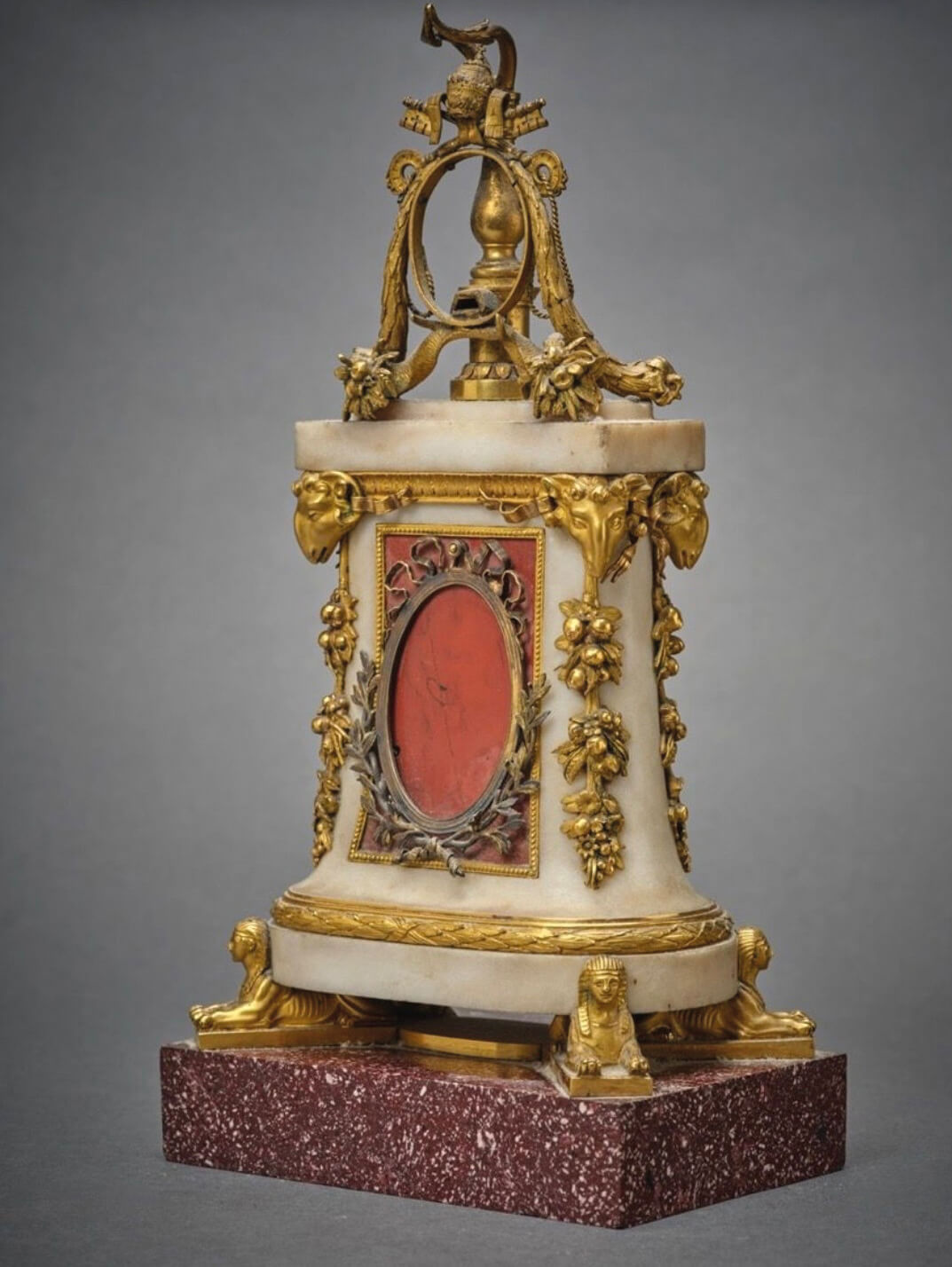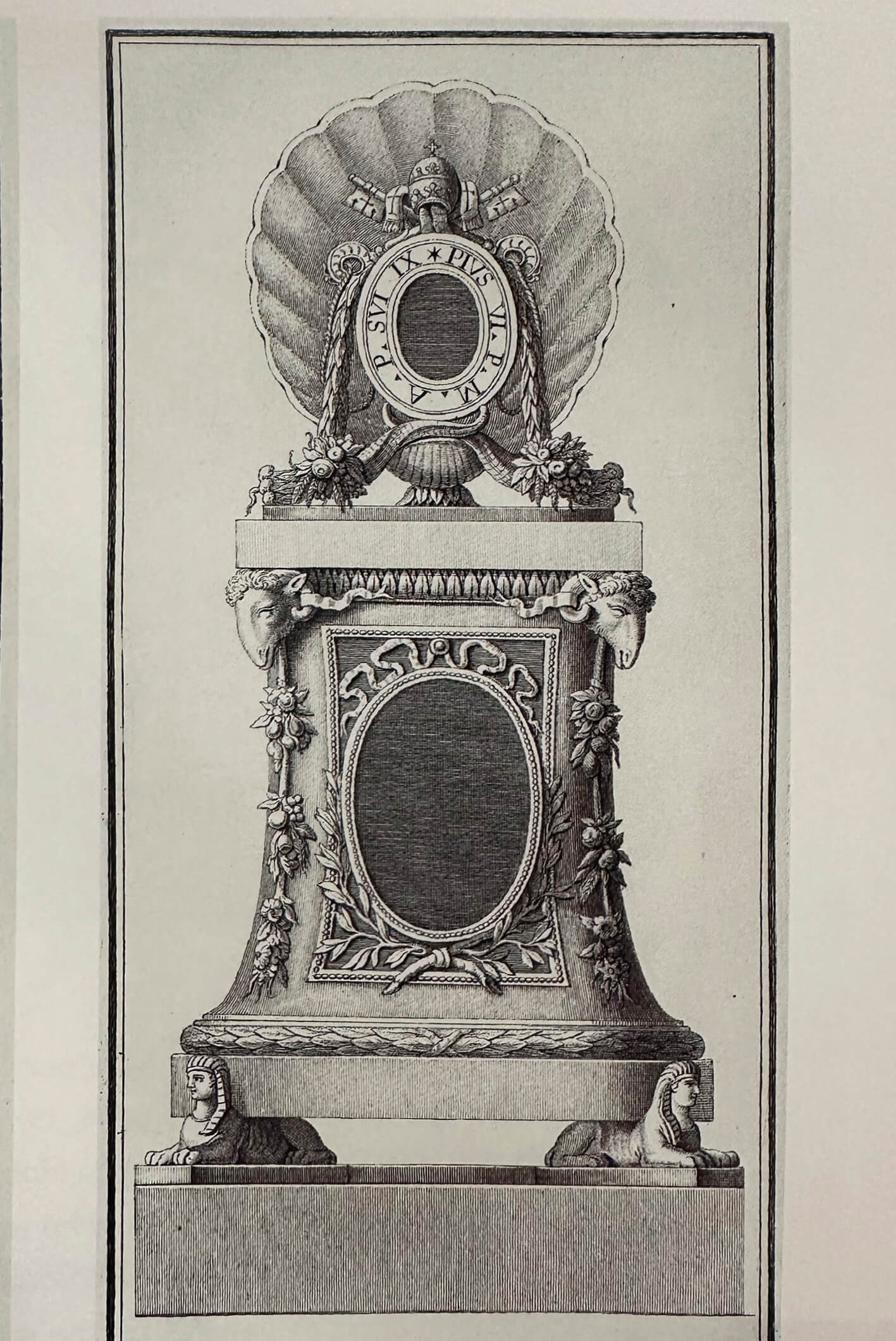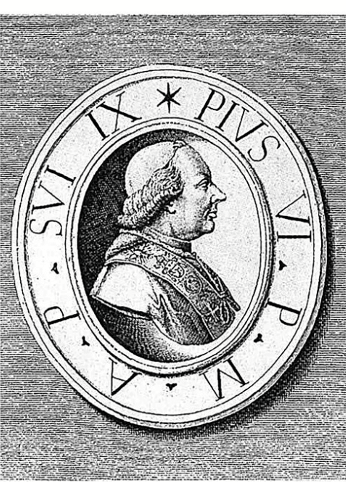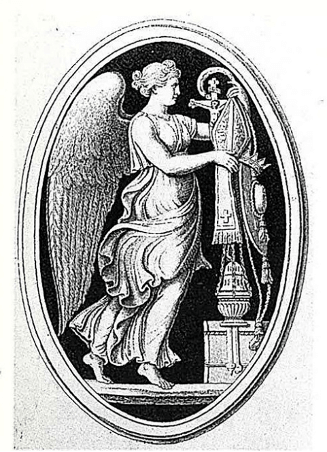

Rome, 1785.
White Carrara marble; rosso antico marble; gilded bronze and Egyptian red porphyry.
LITERATURE: entry by Alvar González-Palacios, in the catalogue of the exhibition Luigi Valadier au Louvre ou l’Antiquité exaltée, Paris, 1994, p. 123-125, cat. n° 9.
As can be observed on the engraving (Ill. 2), the Monument to Pius VI was originally crowned with an agate shell placed behind a cameo depicting a portrait of the pope by Nathaniel Marchand, a German gemstone engraver. An oval cameo showing a standing Fame seen in profile and holding a trophy of religious objects, the work of the Genoese artist Antonio Pazzaglia or his father Stefano, occupied the centre of the pedestal on the front. The work was seized as a spoil of war in 1798 by the troops of General Bonaparte and sent off to the Louvre, where it was minutely described in an inventory drawn up in 1801, but without its cameo portraying Fame; it had since been considered as lost. After the Treaty of Tolentino was signed on 19th February 1797, the Holy See was constrained to accept Bonaparte’s terms, which demanded the surrender of an extraordinary number of works of art, including the monument presented here. These seizures took place after the French entered Rome in February 1798. Many of these treasures were never returned to the Vatican after the fall of the Empire in 1815 but remained in France with the blessing of Pope Pius VII.
Ill. 1 – Monument to Pius VI executed by Luigi Valadier in 1785. Engraving, Rome, National Chalcography.
Ill. 2 – Nathaniel Marchand (active in Rome between 1772 and 1788), cameo showing the portrait of Pius VI. Engraving, Rome, National Chalcography.
Ill. 3 – Antonio Pazzaglia (known between 1766 and 1815) or his father Stefano (still active in 1785), cameo adorned with a Fame holding a religious trophy. Rome, National Chalcography.



